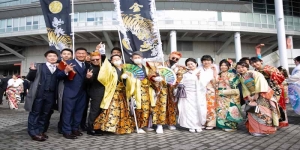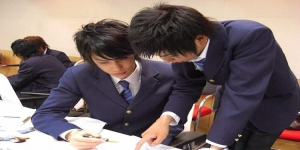Discovering Manga as a Mirror of Japanese History
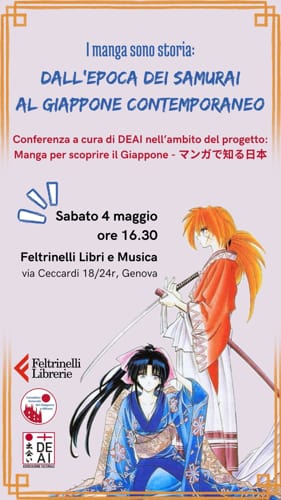
Yesterday I attended a meeting organized by the DEAI association of Genoa which showed an overview of the relationship between manga and how they tell the story. How events, battles and characters are often taken up (and sometimes recontextualised) to give strength to the story of the work. Elements that help to make known the history and culture of such a fascinating country as Japan.
Yotsuya Kaidan 四谷怪談 The work that inspired the Japanese horror series
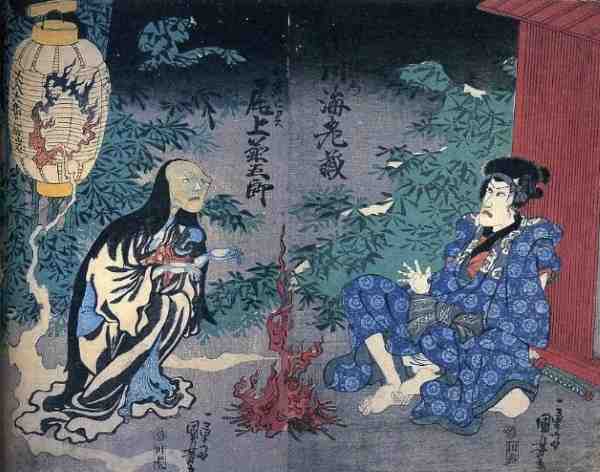
Hate, resentment, revenge are the basic elements of the classic japanese horror films had great success in Japan in this last years, and not only in japan. But where does the inspiration come from, the thread that unites them? let's see how an important work of the past has influenced so much the films that many of us love.
Yotsuya Kaidan (四 谷 怪 談) is a play that features a yūrei (specifically an onryō, vengeful spirit that returns to haunt those who mistreated them in life) among the most famous so that inspire multiple J-Horror films and multiple interpretations and reinterpretations in kabuki theater.
Written in 1825 by Tsuruya Namboku with the original title: 「Tōkaidō Yotsuya Kaidan」 for a representation of the kabuki was inspired by an ancient episode between legend and reality that tells the story of Samon Oiwa and Tamiya Lemon and their family. The story begins with the presentation of the main character 「Tamiya」 a rōnin that is having a discussion with 「Yotsuya」 (Oiwa's father) who didn't accept the deplorable behavior of the son-in-law (while in the best known variant he did not want him to marry his daughter) after a long row the man is assassinated by the rōnin. While 「Naosuke」 was obsessed with Oiwa's sister, the courtesan 「Osode」 despite the fact that she was the future bride of 「Satō Yomoshichi」. One evening Naosuke meets Yomoshochi and 「Takuetsu」 to whom he owed money, unable to pay he is mocked by the two men and Osode herself, so in a raptus shortly after Naosuke tries to kill Yomoshichi, but is stopped by 「Okuda Shōzaburō」 that was killed while Yomoshichi was seriously injured, runs away. At that point Tamiya convinces Naosuke to act as his partner in inducing Oiwa and Osode to believe that they will avenge the death of their father and the injury of the future husband that has now disappeared, while at the same time Naosuke convinces Osode to marry him. In the meanwhile 「Oume」, who was in love with her neighbor Tamiya, feeling less attractive than Oiwa together with 「Itō Kihei」 (the grandfather) devised a plan, brought a beauty cream to Oiwa who unaware that there was a powerful poison puts it on the face remaining seriously disfigured. At the sight of the face of his wife Tamiya decides that this is a good excuse for not staying with her anymore but shortly after realizes that this alone is not enough, so she asks Takuetsu to dishonor his wife, but once he went to the woman's house there man doesn't feel like it.
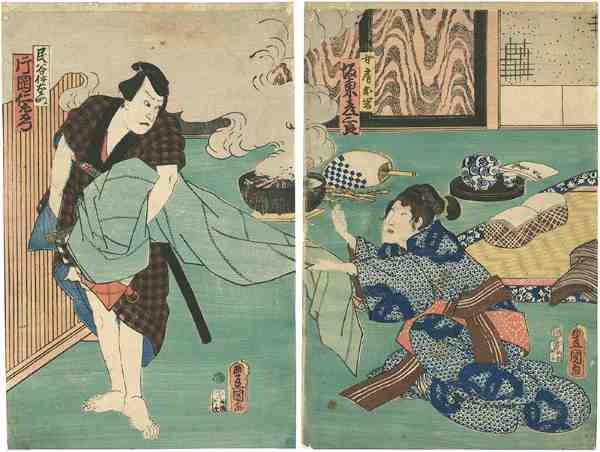
Oiwa looking at her disfigured face in the mirror and getting more desperate she can't even cheer up with the words of Takuetsu who inadvertently detects to the woman that Oume and Tamiya are responsible for her situation so in the grip of a raptus Oiwa kills herself with the sword of Takuetsu. After the events Tamiya who no longer has ties with anyone marries Oume but from that moment onryō of his first wife is looking for revenge, so much that due to the hallucinations caused by the ghost, the rōnin kills much of the same family of Oume. In the meanwhile Naosuke manages to marry Osode, but during the wedding night Yomoshichi makes her appearance, the woman runs away and then commits suicide leaving the two men with a farewell letter. Naosuke realized what he had done and remembering that he had killed Okuda (his teacher) he also commits suicide. The story ends with Tamiya who obsessed more and more with the ghost of Oiwa after killing also Oume due to the hallucination caused by the onryō, takes refuge in a mountain lodge, but every night continues to receive the visit of the spirit of Oiwa that at the Long leads him to madness until he is joined by Yomoshichi who kills Tamiya both out of revenge and out of compassion given the state of the rōnin was reduced (while in a variant it is the same Tamiya who commits suicide).
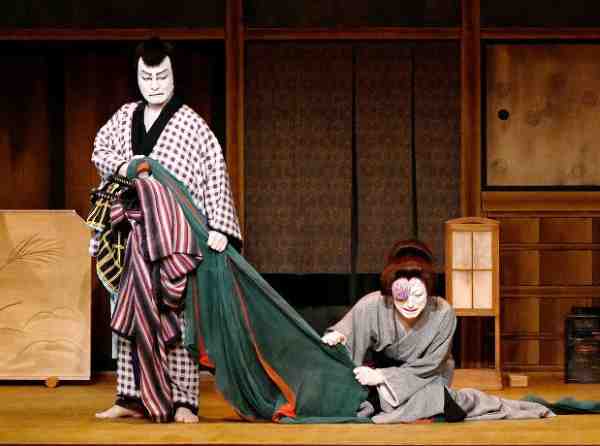
In one of the most famous revisiting of the opera Tamiya to be able to marry Oume at first he poisons his wife Oiwa, but when he discovers that she is pregnant he kills her with the sword and throws her off a cliff. Subsequently the ghost of Oiwa persecutes Tamiya every night and through his apparitions makes the rōnin kill Oume first on the wedding night and immediately after the new father-in-law, until he arrives in the same place where he had pushed Oiwa he throws himself from the cliff to escape from the ghost (to mention that in some adaptations some characters are not mentioned and some details also change). It is said that several Yotsuya Kaidan productions (including television and film adaptations) have reported mysterious accidents, so before staging it is now tradition for some actors and directors to make a pilgrimage to Oiwa's grave and ask her for permission and blessing for their production, tomb that would be located in near Myojo-ji (a shrine located in Sugamo district of Toshima-ku, one of the 23 wards of Tōkyō-to). The figure of Oiwa is the subject of several ukiyo-e style works of art that bear the signature of the greatest artists from Shunbaisai Hokuei, Tsukioka Yoshitoshi, Utagawa Kuniyoshi and Katsushika Hokusai, as well as for the cinematographic tributes made by Yamamura Sadako for the protagonist character of Ringu, the same happens in a scene in Ju-on and in different anime and manga.
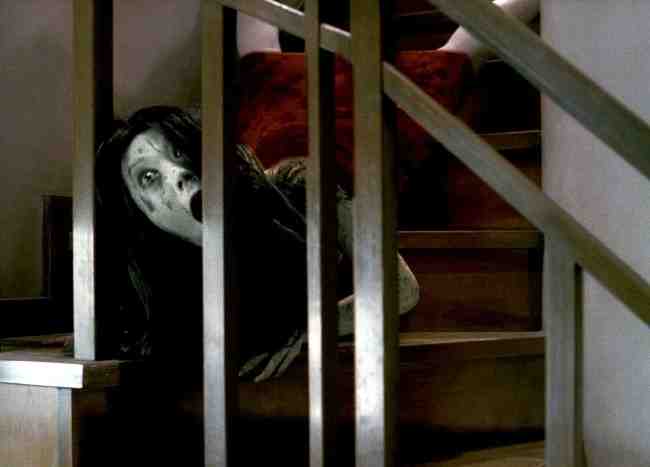
I want to thank our new friend and collaborator, Paolo Napolitano, that wrote this post. He is a boy who has a good knowledge of Japanese culture, especially as regards tradition and folklore. Welcome among us Paolo and thank you for this very interesting post.
The New Series Pocketbook Dictionaries of Evangelion
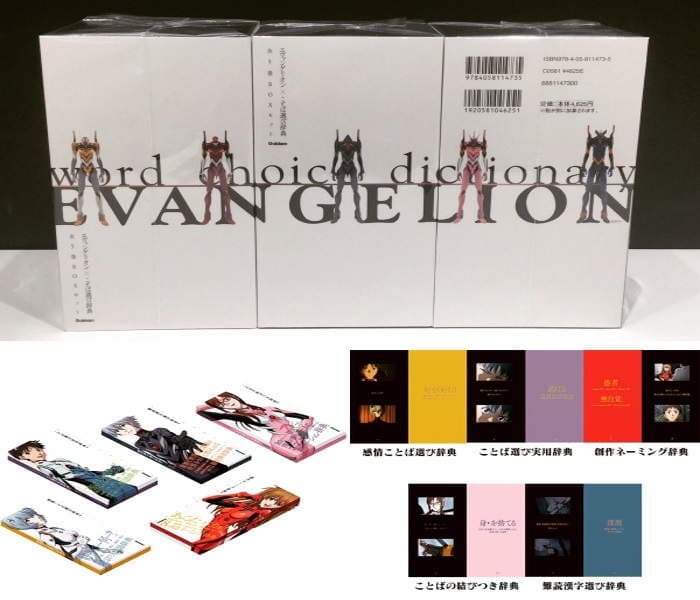
The Gakken, a company known for its books in the linguistic field, like the dictionaries and its pocket versions (Kotoba Erabi Jiten こ と ば 選 び 辞典) has collaborated with the anime series Neon Genesis Evangelion to publish a limited edition set of five books.
The Kotoba Erabi Jiten is a kind portable dictionary very popular in Japan in recent years because of its simplicity that ease in transport and reading.
Gate: jieitai kano chi nite, kaku tatakaeri" ゲート 自衛隊 彼の地にて、斯く戦えり manga

Gate: jieitai kano chi nite, kaku tatakaeri ゲート自衛隊彼の地にて、斯く戦えり ( translatable in Gate: in that land, the self-defense forces fight like this) has seen its transposition into manga format starting from Takumi's light novels Yanai still to be published, with illustrations by Daisuke Izuka, making an appearance since 2011 on the AlphaPolis website with the adaptation carried out by Satoru Sao.

 English (United Kingdom)
English (United Kingdom)  Italiano (it-IT)
Italiano (it-IT) 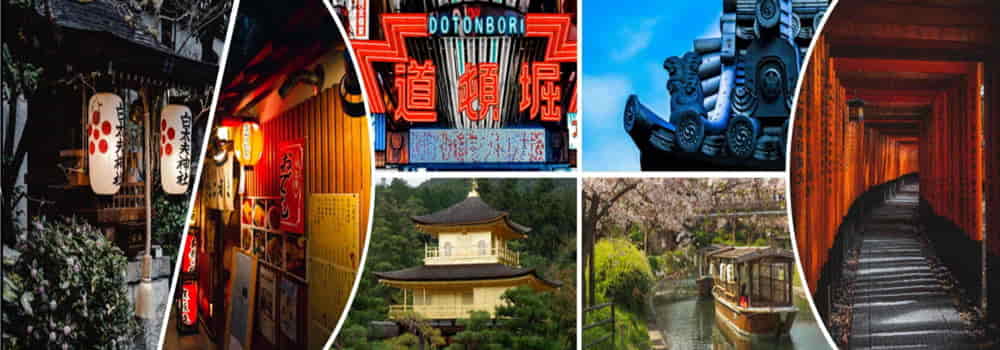
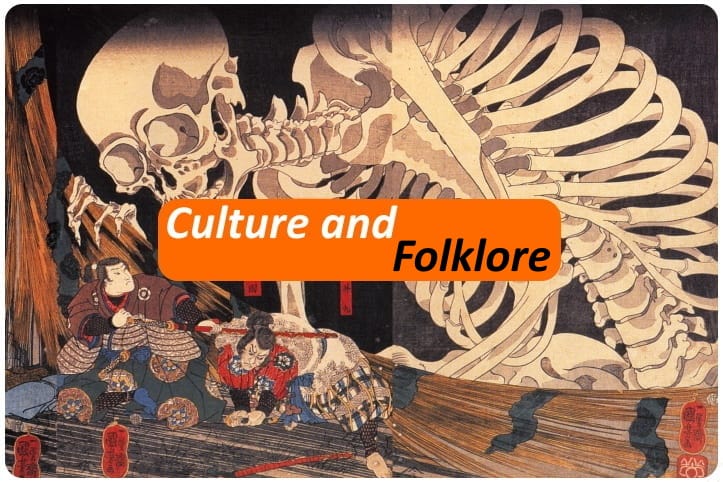




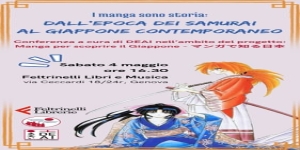
![[Review] Princess Toyotomiプリンセス トヨトミ](https://www.fukainihon.org//cache/mod_jt_contentslider/fdfb524f85518b9476158c79c8ea022f_328.png)

